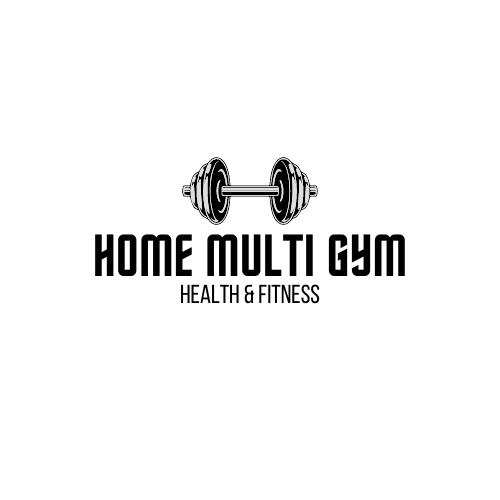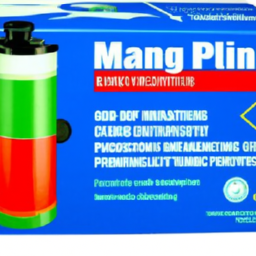Hey there! If you’re a proud owner of a home multi-gym and want to keep it in top-notch condition, then you might be wondering about the general maintenance routine for lubricating its moving parts. Well, you’ve come to the right place! In this article, we’ll dive into all the details and give you some handy tips on how to properly lubricate the moving parts of your home multi-gym.
In the next paragraphs, we’ll discuss the importance of lubrication in ensuring smooth and efficient operation of your multi-gym, as well as the different types of lubricants you can use. We’ll also provide step-by-step instructions on how to lubricate the key moving parts, such as the pulleys, cables, and guide rods. By the end of this article, you’ll have all the knowledge you need to maintain your home multi-gym and keep it functioning at its best. So, let’s get started and learn more about the general maintenance routine for lubricating moving parts on a home multi-gym!
Understanding the Importance of Lubricating Moving Parts on a Home Multi-gym
Why lubrication is necessary for moving parts
Lubrication is an essential aspect of maintaining a home multi-gym in optimal condition. Moving parts in the equipment, such as pulleys, cables, and joints, can experience friction with regular use. This friction can lead to wear and tear, increased noise, reduced performance, and potentially even damage to the equipment over time. By properly lubricating these moving parts, you can not only prevent these issues but also extend the lifespan of your home multi-gym.
Benefits of regular lubrication
Regular lubrication of moving parts on a home multi-gym offers several benefits. Firstly, it reduces friction between surfaces, minimizing wear and tear on the equipment. This results in smoother operation and prolongs the life of the components involved. Secondly, lubrication helps to reduce noise generated by the movement of parts, creating a more pleasant and quieter workout environment. Lastly, properly lubricated moving parts contribute to the overall performance of the equipment, ensuring a satisfying and effective workout experience.
Identifying the Moving Parts on a Home Multi-gym
Different types of moving parts
Before you can begin lubricating the moving parts on your home multi-gym, it is essential to familiarize yourself with the different types of components that require lubrication. Some common moving parts found in a home multi-gym include pulleys, cables, guide rods, slide rails, and joints. Each of these parts plays a crucial role in the smooth operation of the equipment and requires lubrication to function optimally.
Common areas prone to friction
Certain areas of a home multi-gym are more prone to friction than others. These areas include the points where pulleys rotate on their axles, cable attachments, and joints that allow movement during exercises. By identifying these specific areas, you can pay closer attention to lubricating them during your maintenance routine, ensuring that friction is minimized, and proper functioning is maintained.
Choosing the Right Lubricant
Considerations for selecting the appropriate lubricant
Selecting the appropriate lubricant is vital to ensure the efficacy of your maintenance routine. When choosing a lubricant for your home multi-gym, there are several considerations to keep in mind. Firstly, the lubricant should be compatible with the materials used in the equipment. It should not cause damage or deterioration to the surfaces it comes into contact with. Additionally, the lubricant should have good adhesive properties to prevent it from being easily displaced or washed away during exercise. Lastly, it is essential to choose a lubricant specifically formulated for fitness equipment, as these are designed to withstand the demands of regular use and high friction.
Types of lubricants suitable for a home multi-gym
Several types of lubricants are suitable for use on a home multi-gym. One popular option is silicone-based lubricants. Silicone lubricants are known for their longevity and resistance to water and extreme temperatures. They provide excellent lubrication while also protecting the surfaces of the equipment. Another option is graphite-based lubricants, which are particularly effective for reducing friction and preventing sticking. These lubricants are often used on cables and pulleys. It is important to note that grease-based lubricants should be avoided for home multi-gyms as they tend to attract dust and dirt, leading to the build-up of grime.
Preparing the Equipment for Lubrication
Initial steps before applying lubricant
Before applying lubricant to the moving parts of your home multi-gym, it is important to follow a few initial steps to prepare the equipment. Start by reading the manufacturer’s instructions or consulting the user manual to determine any specific recommendations regarding lubrication. This will ensure that you are following the correct procedure and not voiding any warranties. Additionally, make sure to disconnect and unplug the equipment from any power sources before beginning the maintenance routine.
Ensuring the surfaces are clean and dry
Before lubricating the moving parts, it is crucial to ensure that the surfaces are clean and dry. Use a mild detergent or soap and water to clean any visible dirt or debris from the equipment. Then, thoroughly dry the surfaces with a clean cloth or towel. Moisture can prevent the lubricant from adhering properly and may lead to a less effective lubrication process.
Applying Lubricant to the Moving Parts
Proper techniques for lubrication
When applying lubricant to the moving parts of your home multi-gym, it is important to follow proper techniques to ensure optimal results. Start by applying a small amount of lubricant to a clean cloth or brush. Then, carefully apply the lubricant to the relevant moving parts, ensuring complete coverage. Be cautious not to over-apply the lubricant, as this can lead to excess build-up and attract dust and dirt. Additionally, avoid applying lubricant directly to the equipment to prevent any potential damage.
Quantity and application method
The quantity of lubricant required for your home multi-gym will depend on the specific moving parts involved. In general, a thin layer of lubricant is usually sufficient to provide the necessary lubrication. Use small, controlled movements to apply the lubricant, ensuring that all surfaces are adequately coated. If any excess lubricant is present, wipe it away with a clean cloth to prevent accumulation.
Maintaining Lubrication Schedule
Frequency of lubrication
The frequency of lubrication for your home multi-gym will depend on several factors, including the type and intensity of usage. As a general rule, it is recommended to lubricate the moving parts every three to six months. However, if you use your equipment more frequently or notice increased friction or noise during workouts, it may be necessary to lubricate more often. Regularly inspecting the equipment will help you determine when lubrication is required.
Signs that indicate re-lubrication
There are certain signs that indicate the need for re-lubrication of the moving parts on your home multi-gym. The most common sign is increased noise during exercise. If you notice any unusual sounds, such as squeaking or grinding, it is likely that the equipment requires lubrication. Additionally, if the movements feel less smooth or you notice increased resistance, re-lubrication may be necessary. Regular inspection and attentive listening during workouts will help you identify these signs and take appropriate action.
Common Mistakes to Avoid
Over-lubrication
One common mistake to avoid when lubricating the moving parts of your home multi-gym is over-lubrication. While it may seem like more lubricant will provide better results, excessive lubrication can actually lead to issues such as excess build-up, accumulation of dust and dirt, and the possibility of parts sticking together. Stick to the recommended quantity and apply the lubricant carefully and precisely to prevent over-lubrication.
Using improper lubricants
Using improper lubricants can also be a mistake to avoid. As mentioned earlier, grease-based lubricants should be avoided, as they tend to attract dust and dirt. Additionally, using lubricants not specifically designed for fitness equipment may lead to damage or deterioration of surfaces. Always choose a lubricant that is compatible with the materials used in your home multi-gym to ensure optimal results and longevity.
Regular Cleaning and Inspection
Cleaning the equipment regularly
In addition to lubricating the moving parts, regular cleaning of your home multi-gym is essential for its maintenance. After each workout session, wipe down the surfaces with a clean cloth to remove any sweat or moisture. This will help prevent the build-up of grime and extend the life of the equipment. Additionally, periodically clean the cables, pulleys, and other moving parts with a mild detergent or soap to remove any dirt or debris that may have accumulated.
Inspecting for wear and tear
Regular inspection of your home multi-gym is crucial for identifying any signs of wear and tear. Take the time to visually inspect the moving parts, cables, and joints for any signs of damage or deterioration. Look for frayed cables, loose bolts or screws, and any abnormal movement or noise during exercise. If you notice any issues, address them promptly to prevent further damage and maintain the equipment’s functionality.
Additional Maintenance Tips
Tightening loose bolts and screws
As part of the general maintenance routine for your home multi-gym, regularly check for loose bolts and screws. The constant movement during workouts can cause these components to become loose, affecting the stability and functionality of the equipment. Use the appropriate tools to tighten any loose bolts or screws to ensure a safe and secure workout environment.
Checking and adjusting tension settings
Certain home multi-gyms have tension settings that allow you to adjust the resistance for different exercises. It is important to periodically check these settings and make any necessary adjustments. Incorrect tension settings can affect the effectiveness of your workouts and potentially strain the equipment. Consult the user manual or contact the manufacturer for guidance on how to properly adjust the tension settings on your specific home multi-gym.
Conclusion
A general maintenance routine for lubricating moving parts on a home multi-gym is crucial to ensure optimal performance and longevity of the equipment. Regular lubrication, using the appropriate lubricant, is necessary to minimize friction, reduce wear and tear, and maintain a smooth and quiet operation. By following proper techniques, preparing the equipment correctly, and adhering to a regular schedule, you can ensure that your home multi-gym remains in excellent condition. Additionally, regular cleaning, inspection for wear and tear, and addressing any issues promptly will help maintain a safe and effective workout environment. With proper maintenance, your home multi-gym will continue to provide you with a satisfying and rewarding exercise experience for years to come.

